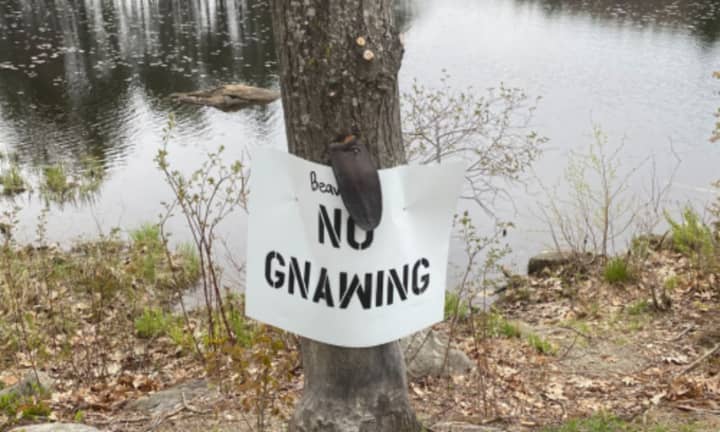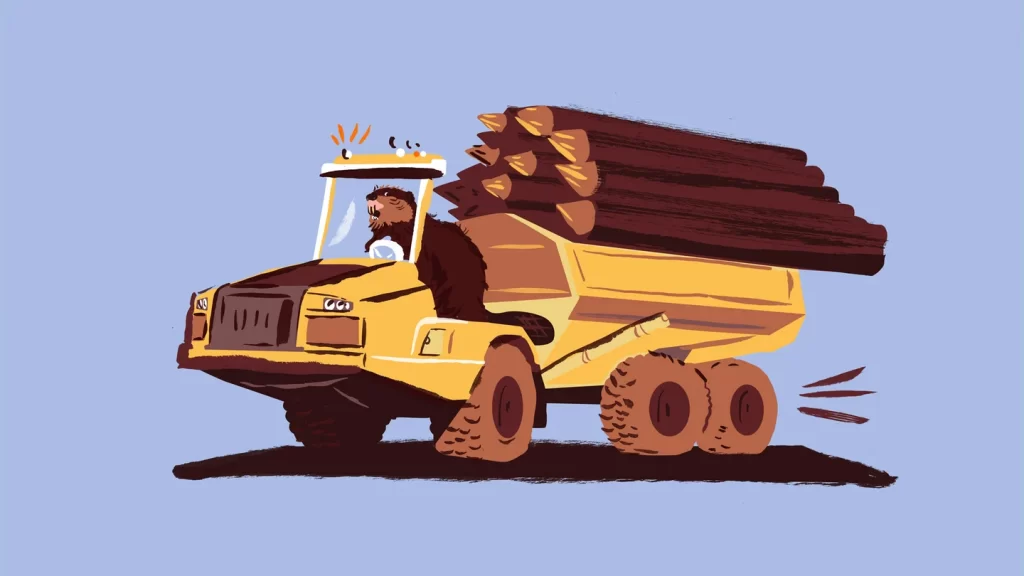Christ redeemed us from the curse of the law by becoming a curse for us—for it is written, “Cursed is everyone who is hanged on a tree.” Gal. 3:13
I had no idea beaver trappers in Massachusetts were so steeped in religious symbolism. Clearly this was a communication that beavers are just like Christ in that they are ruthlessly persecuted while trying selflessly to make lives better for their neighbors and no one stands up for them until it is too late.
Or that’s what I’m deciding to think this all means.
Residents Feel ‘Awful’ After Beaver Tail Found Nailed To Tree In Sterling
 Residents are angry and horrified after a severed beaver tail was found nailed to a tree near a pond in one Central Massachusetts town last month.
Residents are angry and horrified after a severed beaver tail was found nailed to a tree near a pond in one Central Massachusetts town last month.
Sterling Police found the tail nailed to the “Beavers No Gnawing” sign on a tree along Justice Hill Cutoff at Stuart Pond on Thursday, April 27, Animal Control Officer Kelly Jones told Daily Voice.
Jones determined the tail was nailed sometime between 1:30 p.m. on Thursday, April 20 and 7:15 a.m. on Friday, April 21 after getting footage from a Princeton resident.
After confirming that it was a real tail, officers removed and disposed of the tail.
Well isn’t that a nice surprise for your walk in the park. I just love that there seems to be more trappers really to piss everyone off in the most horrible way imaginable. This should do wonders for the animal rights movement.
The incident sparked outrage among the community, with many residents commenting on a Facebook post from Newhouse Wildlife Rescue.
Newhouse Wildlife Rescue is
I can not post the picture that was sent to me today, because it is too upsetting, but I would like to use this platform to help find the culprit.
I apologize for posting something like this, but I feel it’s necessary.
On public property at Stuart Pond in Sterling Massachusetts, a beaver was…I can’t even write it….
This creature was used as an example and left beside a large sign that said “Beaver No Knawing” tacked to a large tree.
If ANYONE has any knowledge regarding who mutilated this animal and put up this sign, please contact the environmental police. This poor creature did not deserve this. No animal does.
There is a news story about the incident which is getting so much attention its been picked up by Yahoo news. I can’t embed it but you can go HERE TO WATCH.
Beavers are like Jesus. Everyone knows that. The word beavers even sounds a little like the word Jesus. Beavers are selfless and they work miracles, Obviously this trapper understood that.
Or maybe he was just an asshole.








































